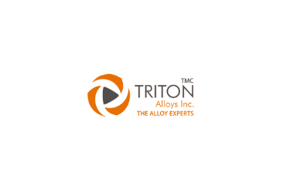Architects constantly seek materials that elevate designs visually while meeting structural needs. However, practical construction materials often lack visual flair. This changed with the advent of weathering steels.
Corten Steel Plate Suppliers, also called corten alloys, get a rust-like look over time from weather exposure. This makes them look more attractive. Cortens are different from rusting carbon steels. SA 537 CL 1 Plate has an outer patina layer that protects the steel from more corrosion. Corten steel is becoming more popular in architecture because it is durable, beautiful, and affordable. This article discusses why corten steel plates are used more in buildings and design projects.
1. Distinctive Rustic Aesthetic
The most immediate appeal of corten steel comes from its signature weathered facade. The outer layer of steel corrodes when exposed to rain, sun, salt, and oxygen. This takes weeks or months. As a result, the steel develops an uneven rust-colored appearance mixed with its original tone. The colors blend naturally. They are rich oranges, browns, grays, and have a metallic sheen. This makes the design visually interesting and deep. The rust layer is different on each plate. It creates a surface texture that is always changing but still fits together.
2. Permanent Yet Evolving Finish
Corten steels like SA 537 CL.2 Plate look like regular rusting, but they erode differently. The rust patina on cortens stabilizes after exposure. It creates a protective barrier that resists degradation. This means the rust layer persists indefinitely without compromising structural capacity. However, the patina continues to subtly shift over years or decades, leading to an organic living finish.
3. Low Maintenance
The stable rust layer also negates maintenance needs associated with most metallic building materials. Painting, repairs, and other upkeep become unnecessary with cortens. The set-and-forget nature of weathering steel facilitates simple, economical construction. This advantage has made corten popular for structures in remote areas or those requiring minimal attention.
4. Lightweight Yet Strong
Corten steel plates like SA 537 CL.2 Plate have visual flair. They are also strong, durable, and lightweight. These qualities make them suitable for structural building applications. Corten steel is good for structures because it has high yield strengths (up to 460 MPa). It is also easy to weld and form. Compared to regular carbon steel, corten steel is lighter. This facilitates constructing long roof spans or accenting tall facades without compromise. The high strength-to-weight ratio also suits seismic regions well.
5. Versatile Geometry
Weathering steel comes in sheet, plate, or panel forms. Its excellent formability allows architects to incorporate organic shapes and angles. Flowing curves, tilted walls, perforated screens, custom-stamped patterns, and other unique forms can be easily integrated. This geometric freedom, paired with eye-catching aesthetics, enables architects’ creativity. SA 537 Plates grants designers artistic licenses that are rarely viable with conventional grey materials.
Conclusion
Corten steel plates have special weathering properties. They can be used in industrial, commercial, and residential building projects. These plates combine structural strength with aesthetic appeal. The rust patina layer helps reduce maintenance and keeps the strength and resilience intact. Corten steel is available worldwide in many different products. Architects can use it to create unique designs. Leading Corten Steel Plate Suppliers like Triton Alloys Inc. offer inventory and customization to convert imaginative visions into practical weathering steel structures.


Write a comment ...